There are many vendors selling development boards around FPGA chips from the manufacturers mentioned in the table. Below are some boards of different FPGA families:
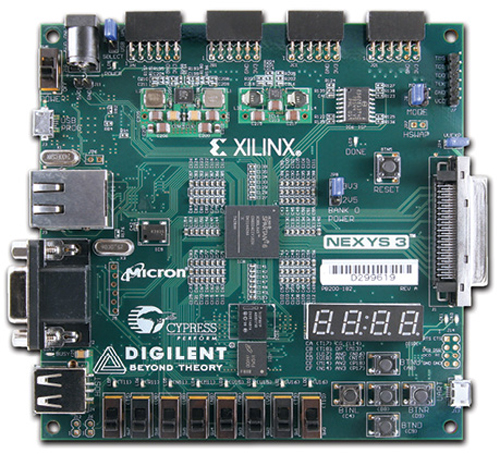
Development boards for Xilinx chips
Spartan-6
1. Digilent Nexys 3
Xilinx Spartan6 XC6LX16-CS324 FPGA
- 16MB Micron Cellular RAM
- 16MB Micron Parallel PCM
- 16MB Micron Quad-mode SPI PCM
- 10/100 SMSC LAN8710 PHY
- Digilent Adept USB port for power, programming and data transfers
- USB-UART
- Type-A USB host for mouse, keyboard or memory stick
- 8-bit VGA
- 100MHz fixed-frequency oscillator
- Eight slide switches, five push buttons, 4-digit seven-segment displays and eight LEDs
- Four double-wide Pmod connectors and one VHDC connector
- Rugged plastic case and USB cable included
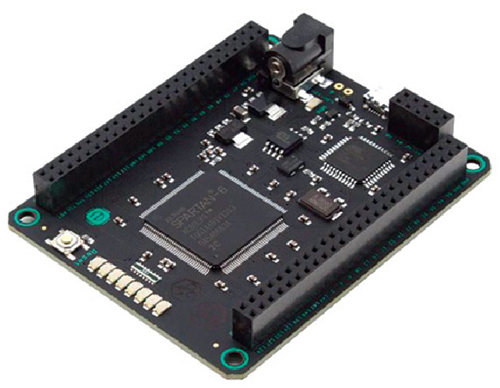
2. The Mojo
- Spartan 6 XC6SLX9 FPGA
- 84 digital I/O pins
- Eight analogue inputs
- Eight general-purpose LEDs
- One reset button
- One LED to show when the FPGA is correctly configured
- On-board voltage regulation that can handle 4.8V-12V
- A microcontroller (ATmega16U4) used for configuring the FPGA, USB communications and reading the analogue pins
- On-board Flash memory to store the FPGA configuration file
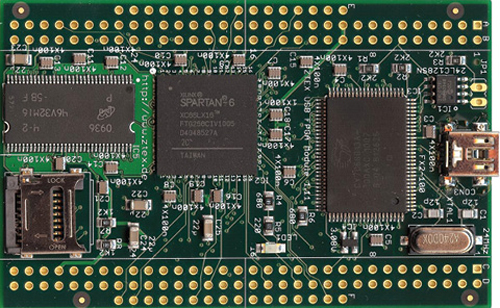
3. ZTEK USB FPGA module
- High-Speed (480Mbps) USB interface via mini-USB connector (B-type)
- Cypress CY7C68013A EZ-USB FX2 microcontroller
- Xilinx Spartan 6 LX9 to LX25 FPGA (XC6SLX9 to XC6SLX25)
- 90 general-purpose I/O’s (GPIOs)
- 15 special I/O’s (SIO)
- 64MB DDR SDRAM
- MicroSD socket for extensible Flash memory (standard and high-capacity (SDHC) cards, SPI mode support required)
- Bitstream loading from Flash to FPGA supported by the firmware
- Accessible from EZ-USB FX2, from FPGA and from host software using the SDK
- 128 kbit EEPROM memory (can be used to store the EZ-USB firmware)
- FPGA configuration/programming via USB using the EZ-USB FX2 SDK. (No JTAG adaptors or other additional utilities required)
- FPGA configuration/programming from Flash memory
ZTEK USB FPGA module has no on-board LEDs or buttons, but contains 64MB of SDRAM and a huge 90 GPIOs in a convenient plug-in module form factor, which is nice for dropping into a custom carrier board. Unfortunately, it does not have its own built-in power supply, so you need to place it onto the power supply or experimenter board, and then drop that onto your own board.
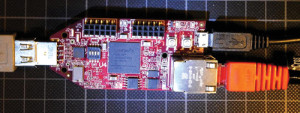
4. Avnet Spartan-6 Microboard
- Spartan-6 XC6SLX9-2CSG324C FPGA
- 64MB LPDDR SDRAM
- 128Mb multi-I/O SPI Flash
- 10/100 Ethernet PHY
- USB-to-UART port
- On-board USB JTAG circuitry
- Two Digilent Pmod compatible headers (2×6)
- Single-chip, 3-rail power with Power Good indicator
- Programmable clock chip
- Over-voltage and ESD protection on USB
- Four LEDs
- 4-bit DIP switch
- Reset and PROG push-buttons
Avnet Spartan-6 Microboard appears to be similar to the Arrow BeMicro. It is designed for embedded processor development and comes with a device locked SDK and ChipScope Pro licence, which is pretty good as these are quite expensive to buy separately. ChipScope alone is invaluable. I/O capability is pretty rudimentary with only two 8-bit PMOD connectors. The licenses are actually device locked to the XC6SLX9 (of any package), so it might be handy for you if you were developing your own board with this series.
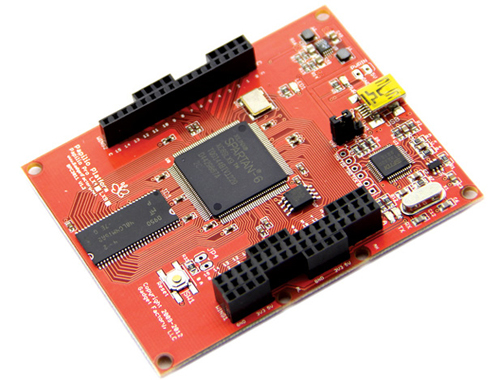
5. Papilio Pro
- Spartan 6 LX9 FPGA
- High-efficiency LTC3419 step-down dual-voltage regulator
- Dual-channel FTDI FT2232 USB 2.0 full-speed interface
- 64Mb Micron MT48LC4M16 SDRAM
- 64Mb Macronix MX25L6445 SPI Flash
- 48 I/O pins arranged in a Papilio Wing form factor
- 32MHz crystal oscillator
Papilio Pro is a Spartan-6 LX9 board that retains compatibility with expansion wings made for the original Papilio. The design is released under a Creative Commons licence.
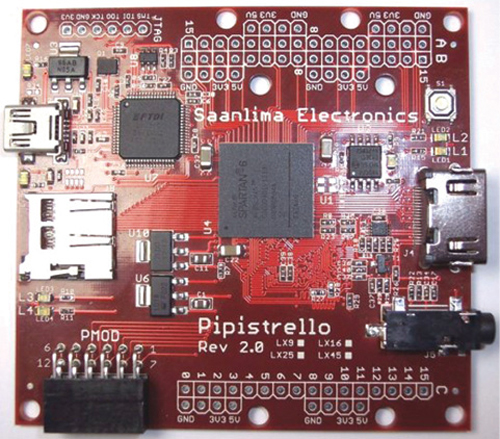
6. Pipistrello
-
-
- FPGA: Spartan-6 LX9, LX16, LX25 or LX45 in 324 BGA package
- Flash memory: 128 Mbit SPI Flash memory (Micron N25Q128A13ESE40G) wired for 1x, 2x or 4x wide data path
- On-board DRAM: 64MB (32Mx16) of LPDDR memory (Micron MT46H32M16LFBF-5) clocked at 200MHz (up to 800MB per second transfer rate) in 60 BGA package
- USB device interface: High-speed (480Mbps) interface using a 2-channel FTDI FT2232H chip. Channel A is wired for JTAG. Channel B is wired for serial or async FIFO mode.
- DVI/HDMI interface: Full HDMI interface (including I2C level translators for DDC) using a 19-pin HDMI type A connector
- Audio output: Two-channel audio output using 1-bit sigma-delta DAC
- Micro-SD card: Socket for micro-SD card, wired for SPI or native (4x wide) SD interface
- PMOD interface: Double-row PMOD connector that will allow the use of a wide range of PMOD devices
- LED indicators: Power (green), config state (yellow) and five user-defined LEDs
-






